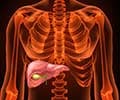- KD Tripathi. Essentials of Medical Pharmacology 6th edition
- Nair R, Maseeh A. Vitamin D: The “sunshine” vitamin. J Pharmacol Pharmacother. 2012 Apr-Jun; 3(2): 118–126. doi: 10.4103/0976-500X.95506
About
Vitamin D is an essential vitamin necessary for the development of bones. Sunlight helps the body to produce vitamin D. Deficiency of vitamin D results in rickets in children and osteomalacia in adults.
We often hear our elders telling us to go out in the sun to get more vitamin D. Sometimes, we may wonder if this is a fact or a myth. The article below will describe the relationship between sunlight and vitamin D, and why vitamin D deficiency could occur.
Sunlight and Vitamin D
Yes, sunlight does increase vitamin D levels in the body. But it isn’t as if sunlight directly transmits vitamin D to your body. Sunlight acts as a catalyst and helps the skin to synthesize vitamin D, which can be utilized by the body.
The ultraviolet B rays of the sun penetrate uncovered skin and bring about conversion of 7-dehydrocholesterol to previtamin D3, which ultimately becomes vitamin D3. This effect varies in the following situations-
- A complete cloud cover reduces the ultraviolet energy by 50% and thereby reduces vitamin D synthesis.
- Shade including that due to air pollution and smog could reduce the radiation by 60%.
- Sunscreens with a sun protection factor (SPF) of 8 or more could block the ultraviolet radiation. Sunscreen with SPF of 30 reduces vitamin D synthesis in the skin by more than 95%.
- Closed windows block the ultraviolet radiation; therefore a person cannot get vitamin D by sitting by a window or traveling in a closed car.
- People with dark skin have a reduced ability to produce vitamin D on exposure to sunlight. These individuals may require at least three to five times longer exposure to make the same amount of vitamin D as a person with a white skin tone.
The exact amount of exposure to sun necessary to fulfill the daily requirement of vitamin D has not been established. Vitamin D is also synthesized by the skin when people use commercial tanning beds that emit 2%–6% UVB radiation. However, it is important to remember that excessive exposure to sunlight and tanning beds is associated with skin cancer, and should therefore be avoided.
Besides being synthesized by the skin, vitamin D is also obtained from the diet and supplements. Foods rich in vitamin D include fish like salmon, tuna, and mackerel as well as fish liver oils. Foods like milk, cereals, orange juice and cooking oil are often fortified with vitamin D. These forms of vitamin D are usually inert, and have to pass through the liver as well as the kidneys to reach their active form, also called calcitriol. Supplements can be taken when a person does not have adequate exposure to sunlight or lacks the necessary dietary intake to meet the daily requirement of vitamin D.
Role of Vitamin D
Vitamin D is an essential vitamin for normal bone growth. It helps in the absorption of calcium and phosphate from the intestines, thereby maintaining their normal levels in the blood. It also helps to prevent osteoporosis in older individuals.
Vitamin D is also involved in other functions in the body, like cell growth, neuromuscular and immune function, and controlling inflammation. It may help to prevent some cancers like breast, prostate and colon cancer.
Vitamin D deficiency
Deficiency of vitamin D occurs due to-
- Limited exposure to sunlight: This includes people who are home-bound, women who wear long robes and cover their heads for religious and other purposes, or who use sunscreen extensively.
- Inadequate intake of vitamin D through diet: Vegetarian people may suffer from vitamin D deficiency if they do not eat adequate foods fortified with vitamin D.
- Inadequate absorption of vitamin D from the intestines: Vitamin D requires the presence of fat from the diet to be absorbed in the intestines. Thus, in people with problems with fat absorption like those with liver disease, cystic fibrosis and Crohn's disease may suffer from vitamin D deficiency. Patients who have undergone gastric bypass surgery for obesity may also suffer from vitamin D deficiency. In addition, medications taken along with vitamin D may interfere with its absorption.
- Increased requirement of vitamin D: Periods of growth like infancy and adolescence require additional vitamin D, which if not available, can result in deficiency.
- Kidney disease: In kidney disease, the kidneys cannot convert vitamin D to its active form, or excessive vitamin D is lost in the urine.
Deficiency of vitamin D results in a condition called rickets in children and osteomalacia in adults. Rickets results in soft bones and bony deformities. Adults with osteomalacia are prone to fractures.
Excessive vitamin D is detrimental to health. It can raise blood levels of calcium, and damage the heart and result in kidney stones. High vitamin D levels are usually due to intake of supplements of vitamin D. Too much exposure to sunlight does not result in excessively high vitamin D levels.





